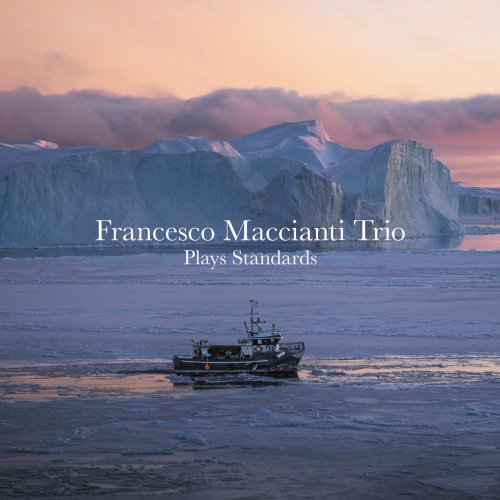Artist:
Mario Hossen, Piero Barbareschi
Title:
Bach: Sonatas for Violin & Harpsichord, Vol. 2 (BWV 1015, BWV 1018, BWV 1019)
Year Of Release:
2021
Label:
Da Vinci Classics
Genre:
Classical
Quality:
FLAC (tracks)
Total Time: 43:34
Total Size: 301 MB
WebSite:
Album Preview
Tracklist:01. Violin Sonata in A Major, BWV 1015: I. Dolce
02. Violin Sonata in A Major, BWV 1015: II. Allegro
03. Violin Sonata in A Major, BWV 1015: III. Andante un poco
04. Violin Sonata in A Major, BWV 1015: IV. Presto
05. Violin Sonata in F Minor, BWV 1018: I. Largo
06. Violin Sonata in F Minor, BWV 1018: II. Allegro
07. Violin Sonata in F Minor, BWV 1018: III. Adagio
08. Violin Sonata in F Minor, BWV 1018: IV. Vivace
09. Violin Sonata in G Major, BWV 1019: I. Allegro
10. Violin Sonata in G Major, BWV 1019: II. Largo
11. Violin Sonata in G Major, BWV 1019: III. Allegro
12. Violin Sonata in G Major, BWV 1019: IV. Adagio
13. Violin Sonata in G Major, BWV 1019: V. Allegro
Sonatas BWV 1015, 1018 and 1019, recorded in this CD, crown the complete recording of Bach’s Sonatas for violin and obbligato harpsichord, along with BWV 1014, 1016 and 1017 (as well as BWV 1023 for violin and continuo) found in the first volume. They belong in a splendid series composed by Bach during the period he spent in Köthen (1717/1723). Those years were particularly felicitous for the quantity, quality and inspiration of the works he wrote. In particular, the works indicated as 1014 to 1019 were composed between 1718 and 1722. The corpus of these six Sonatas is currently considered as a somewhat homogeneous series, since they have been collected and published jointly. However, the composer did not envisage them originally with this vision. In fact, even though they can all be counted among the “Sonate a tre” typical for seventeenth-century music, each presents precise features of its own, marking it with originality and abundance of ideas. Seeing, and obviously hearing, the six Sonatas as a whole, provokes in the listener the same wonder elicited by the Six Brandenburg Concertos. These were also written in those same years; here, analogously, Bach, proposes for each a formal structure which is somewhat similar (since they all are “concertos” for many instruments) but finding musical and timbral results which are always different and unique.
Following this premise, therefore, listening to each Sonata represents, for the audience, a mine of diverse approaches, differing for variety and inspiration, in a fascinating itinerary through Bach’s musical universe.
Keeping into account – as previously hinted – that they possess a structure analogous to that of the seventeenth-century “Sonate a tre”, in some cases the bass line could be doubled by another instrument (i.e. a viola da gamba). This practice is actually never employed, nowadays, for these Sonatas, given the richness and complexity of both the violin and (especially) the harpsichord part.
Also in these three Sonatas, indeed, the obbligato harpsichord not only enters into a dialogue of peers with the bowed instrument in the intertwining of the parts (the violin and the harpsichordist’s right and left hand); rather, in some cases, it assumes a dominant role, requiring technical skills and control which only expert performer possess, yesterday as today. We should dutifully remember that the most famous musician among Johann Sebastian’s children, i.e. Carl Philipp Emanuel, was probably the best harpsichordist of his time. His father knew, therefore, that what he had in mind could find an adequate performer.
This awareness helps us to understand the particular case represented by BWV 1019: here, the solo harpsichord is granted a full movement over a total number of five. It also frees itself from the formal scheme of the Church Sonatas found in the other works, which are structured following the typical alternation of the four movements, “slow-quick-slow-quick”.
Sonata BWV 1015 (A major), after a first movement (“Dolce”) in an undulating 6/8 tempo, displays in its second movement the features of a typical Fugato. This had already been observed in other Sonatas of the collection. Unexpectedly, here a 20-bars long section appears, where a long E is sustained at the bass, and over which Bach himself requests to the violinist to realize (through the indication of “arpeggio”) a series of open chords. Then, it resumes (in a kind of an A-B-A scheme) the thirty initial measures, which close the movement. This could be one case where the presence of a viola da gamba could allow for a more efficacious sustaining of the long tone of the bass. On the keyboard instrument, in fact, the need for repeating this note is an unavoidable necessity. The third movement (Andante un poco) placidly flows in the form of a Canon. A similar scheme, but with more energy, is found in the concluding Allegro, which is also a fugato as happens in five out of six sonatas (also in this case the sixth piece, i.e. BWV 1019, is exceptional).
Respecting each Sonata’s own originality and inspiration, as previously hinted, the first movement of Sonata BWV 1018 (F minor), doubtlessly long (with its 108 bars) is the only one where there is an evident polyphonic structure in four parts. Here too a nobility and solemnity emerges in the voice-leading of the melodic ideas, as well as in the modulations. They stand comparison with important vocal-instrumental pieces by Bach, in particular bringing to the listener’s mind an evident melodic idea found in Motet BWV 229. It is interesting to observe that, in one manuscript, this movement bears the indication “lamento” instead of the “dolce” found in the printed editions. This particular may help us in order to better understand the “affect” which Bach wished to represent. Also in this Sonata, the second movement is a dynamic fugato where violin and harpsichord chase each other in an exalted string of sixteenth-notes. The third movement is particular and somewhat surprising. In this 27-bars-long Adagio, the violin inexorably plays a series of bichords, creating a series of modulations which are a genius’ work. They are supported by an ostinato accompaniment which is equally rhythmically unvaried. However, thanks to the composer’s unique genius, this does not cause boredom or foreseeability.
In this Sonata, as before, the fourth movement is an enthralling Fugato. In this case, it is in a lively 3/8 tempo, where the upbeat theme causes a continuing elan to the voice leading, and does not find, up to the very last bar, any moment of seeming quiet and lack of energy.
Sonata BWV 1019 (G major) closes the series. It contains some details in its overall structure which make it surprising and almost unique in its genre. For a time, it was not considered with any certainty to be an original work by Bach. This musicological doubt is nowadays definitively dispelled; however, it came to us in three versions. It is thought that the last one, from the Köthen period, had been considered as the definitive version by Bach himself, and therefore it is the version we decided to record here. The first movement, Allegro, can be assimilated to a first movement of a concerto for solo instrument and strings, due to the rhythmical structure of its melodic cells, to the bass line and to the dialogue among the parts. It echoes the most beautiful examples of this genre written by Bach. The unusual odd-numbered structure in the division of the movements allows Bach to build a form with precise symmetric rules. A meditative Largo, just 21 bars long, precedes and introduces an unforeseen movement, i.e. a lively Allegro for solo harpsichord. Here the composer seems to wish to pay homage to the keyboard instrument by making it the protagonist of a few minutes. It represents a kind of a watershed between a symbolic first and a second part, each of which is made of two movements.
When the exaltation of the keyboard instrument is over, a solemn and processional Adagio reintroduces the dialogue between the two soloists, before the last and seemingly unstoppable Allegro. The keys’ series is also symmetrical: the first and the last movement joyfully define the key of G major, while the central movements are written in its relative key of E minor.
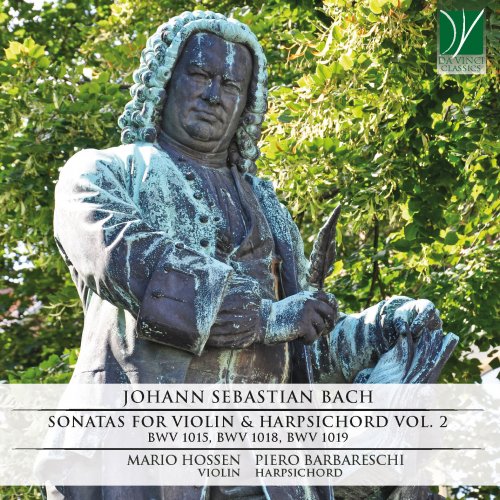

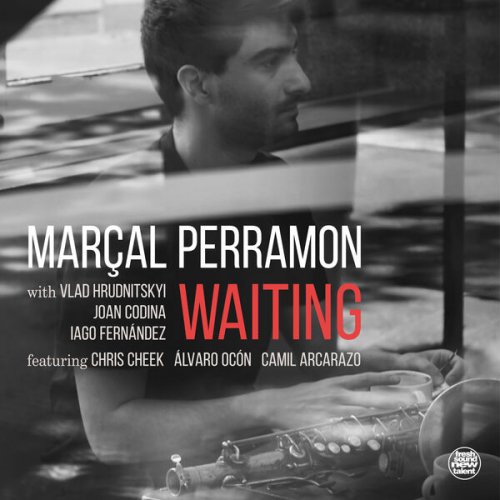
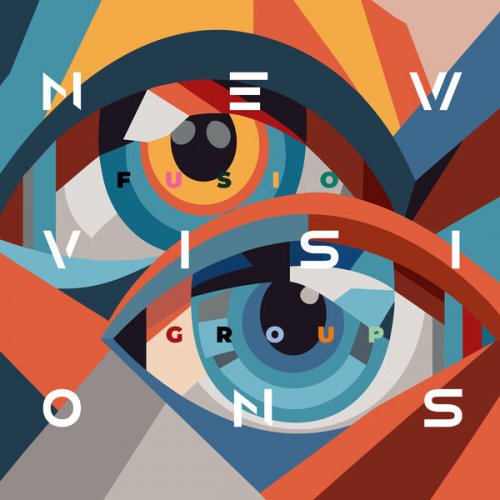
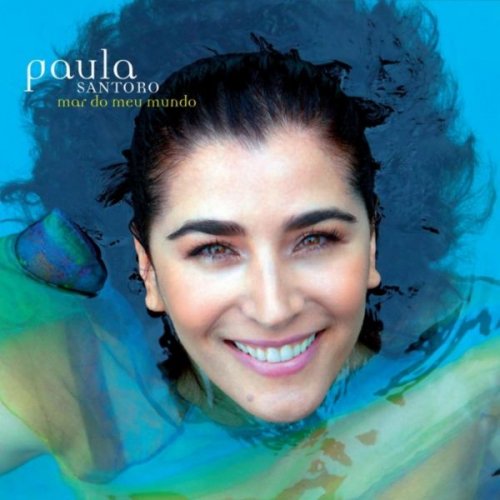
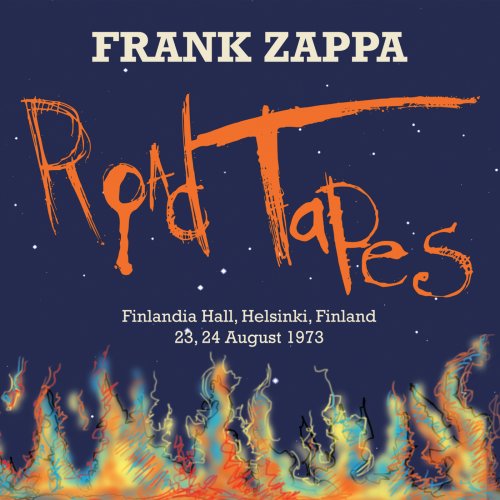
![Tomasz Stańko - Rue de la Tour (Polish Radio Sessions vol. 5/6) (2025) [Hi-Res] Tomasz Stańko - Rue de la Tour (Polish Radio Sessions vol. 5/6) (2025) [Hi-Res]](https://www.dibpic.com/uploads/posts/2025-12/1765796463_cover.jpg)


![Frank Sinatra, Count Basie - It Might As Well Be Swing (1964) [2021 SACD] Frank Sinatra, Count Basie - It Might As Well Be Swing (1964) [2021 SACD]](https://www.dibpic.com/uploads/posts/2025-12/1766090910_scan-1.jpeg)
